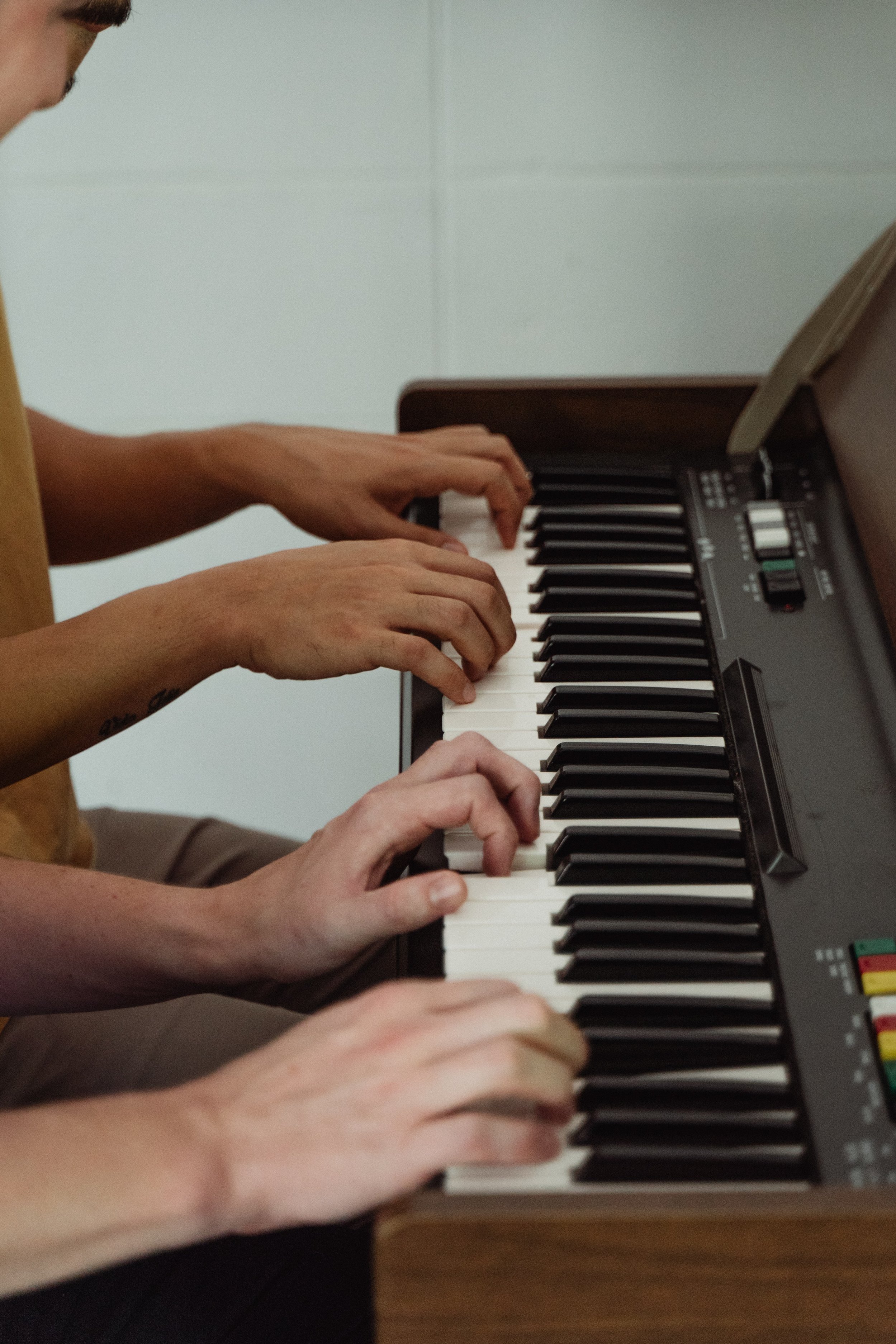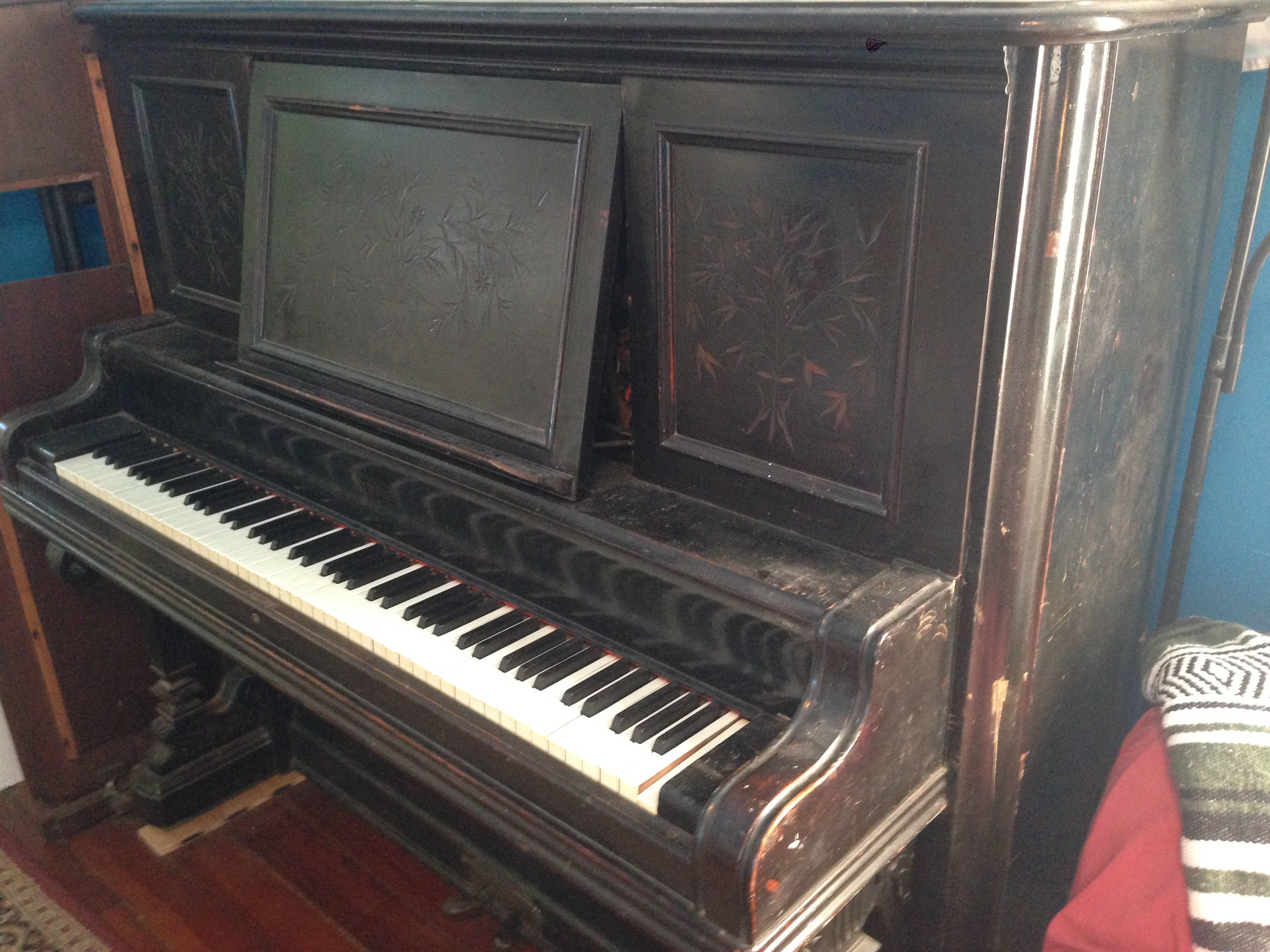If you are looking to purchase a used piano, your options can be a bit overwhelming. Between the hundreds of pianos on Craigslist, at piano dealers, thrift shops, estate sales, and furniture liquidators, it can be hard to know which style you want and which piano is worth your money. In addition, there are countless different piano manufacturers that have existed over the past 100 years, some of which can be very hard to find any helpful information about. Be diligent about doing your research before purchasing an instrument. With over 5,000 distinct parts in an upright piano action, there are a lot of things that can go wrong. You want to make sure that you know of any serious problems before you open up your wallet and bring a 600+ pound piece of furniture into your home. I recommend familiarizing yourself with some basic piano anatomy. If you find something that doesn't look right in a piano, you want to be able to communicate about it in a way that another person will know what you are talking about.
Paying a piano technician to accompany you while you look at a used piano can be a great way to get a better idea of a piano's value and condition. Keep in mind that there are technicians who spend most of their time working with high quality pianos that are worth tens of thousands of dollars and that they may push you to purchase a high quality piano and consequently spend more money than you are comfortable with. Be realistic. If this is a piano that is only going to be used for your own enjoyment in your own home, you can probably get along with a lower quality piano just fine, even if it has some imperfections.
Start by opening the lid and looking inside of the front panel of the piano. The front panel is often held in by two clips, screws, or pins; one on each end near the top edge. Be sure to carry a flathead and a Philips-head screwdriver with you in case the panel is held by screws. Once any fasteners have been removed, the front panel can be lifted away from the piano in order to get a better view of the action.
The first thing to do when checking out a piano is to play every key on the keyboard, starting from the bottom and moving along all the way to the top. Play each key several times in quick succession and at varying volume. Have the lid of the piano open while you do this and keep an eye on each hammer as it strikes the strings. Take note of any keys that move sluggishly or get stuck at any point in their movement. Listen for any knocking or clicking noises that occur when a key is pressed or when it is released. Look for hammers that are slow to return to their starting position, hammers that don't return at all, or single keys that cause multiple hammers to move at once. Most of the time, these symptoms don't indicate any particularly serious problems, but they can stack up quickly and result in an expensive repair bill. Listen to the tone that each key produces, if every note sounds OK by itself, that is a good sign, even if the piano as a whole is out of tune. The real trouble is when any key played alone produces a particularly dissonant tone. This can signal that there are issues with the pinblock. Sometimes this requires drastic measures to repair and can cost more than the piano is worth.
Look for pitted or detached hammer felt. Holes in the felt indicate a rodent or insect problem that may or may not still exist in the piano. Detached felts need to be re-glued to the wooden hammer core. Check for broken bridle straps. This is a common problem and can often be repaired without the help of a piano technician.
Pitted hammer felt caused by rodents
Each of the 88 notes should share most of the same parts. Look for any note that seems to be missing a part that most of the other notes have. Keep in mind that the top 20 notes or so will not have dampers or any of the parts associated with dampers. Look for any stripped screw heads and for rusty, broken, or missing strings. Wound bass strings are much more expensive to replace than treble strings. Test out each of the pedals. Do they feel solid when depressed all the way or do they feel squishy? Squishy pedals can be a signal of damage to the bottom board of the piano. Watch the action as you press the damper pedal and notice if the action responds evenly all the way across the piano, or if the action responds at one end first and moves like a wave across to the other end. This can be a signal that the damper lift rod and its hinges have been bent or damaged.
The top 20 or so notes in the piano do not require the damper mechanism
Take an eye-level look at the front of the keys. Keys that are evenly spaced and level are a sign of a piano that was well taken care of. This piano was not.
Remove the bottom panel by pushing upward on the one or two springs that are fastened to the underside of the keyboard and tilting the top of the panel toward you. Check inside of the piano for felt, leather, springs, or screws that have fallen out of the action. Also look for any piles of debris or feces that indicate the presence of rodents. Shine a light on the soundboard and bridges behind the strings to look for any cracks in the wood. Small cracks are usually not a problem, but large ones can cause unpleasant buzzing or rattling noises as well as loss of volume and they can be expensive to fix. Also look at the bridge and hitch pins that the strings curve around. Look for pins that have become dislodged from their original place in the bridge. You will see a hole where the pin originally entered the bridge that has become widened over time. Small cracks or holes in the bridges can be repaired on site with epoxy, but larger problems will require the piano to be sent to a repair shop so that new bridges can be created and installed. Check over the cast iron plate for any damage or cracks. The plate needs to resist thousands of pounds of tension created by the strings, and any weak points in it can cause big problems.
Another important thing to look for, especially in the Gulf Coast region, is flood damage. The last thing you want is a piano that has spent time sitting in water. The wood swells, glue joints break, and strings, pedals, and the cast iron plate will rust. Avoid these pianos, unless you know that they are salvageable and are worth the cost of restoring them.
Finally, pull the piano out from the wall and inspect the back. Look for any damage that may have occurred to the cabinet when the piano was moved and take another look at the soundboard as well as the ribs that span across it. Make a note of any sections of the soundboard that have separated from the ribs. These separations can usually be repaired by using toggle bolts, but it will be an extra expense that involves drilling holes through the ribs and soundboard.




















I have been servicing and tuning pianos in NOLA since 2012 after first becoming interested in piano technology in 2009. With a background in teaching bicycle mechanics, I bring a methodical mindset and a love of sharing knowledge and skills to the rich musical culture of New Orleans.